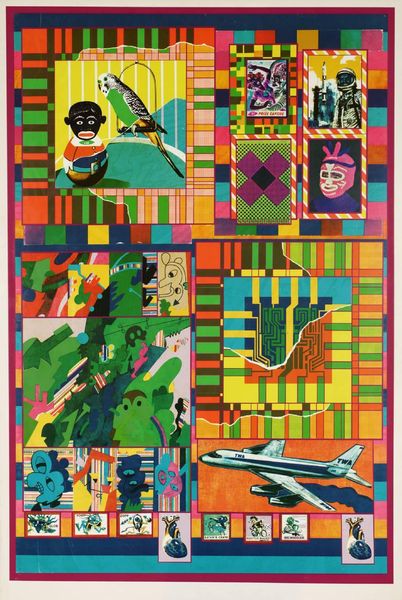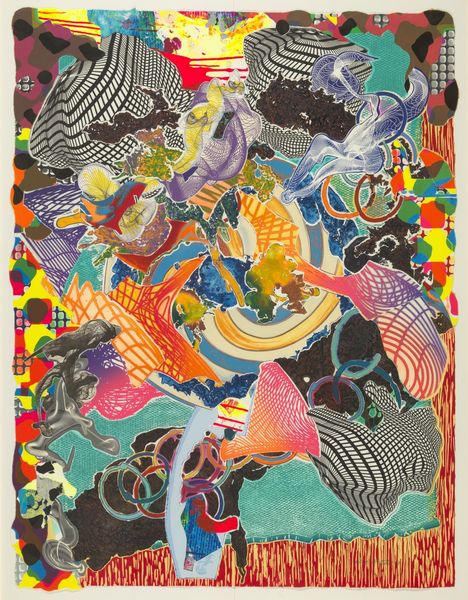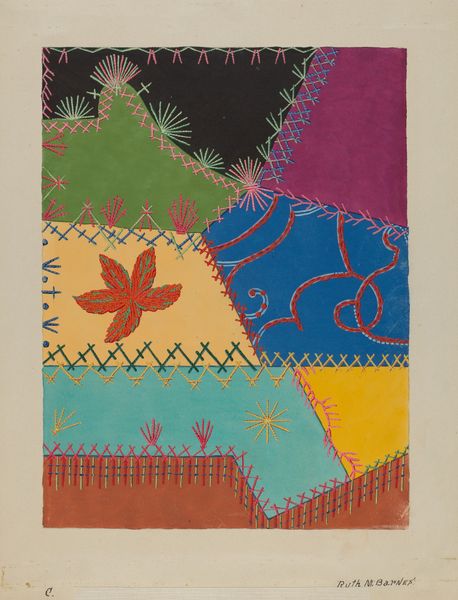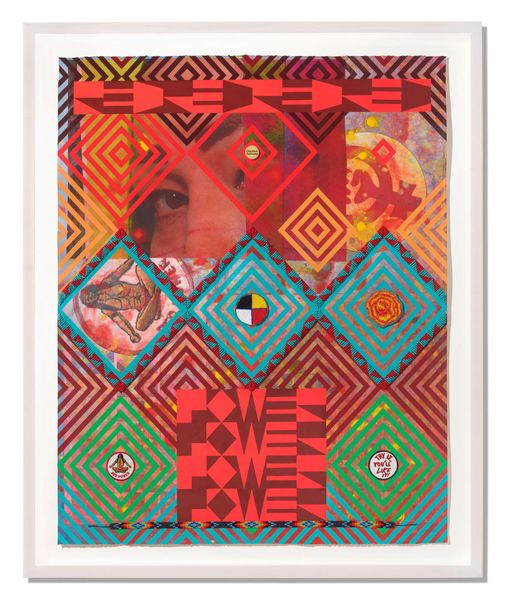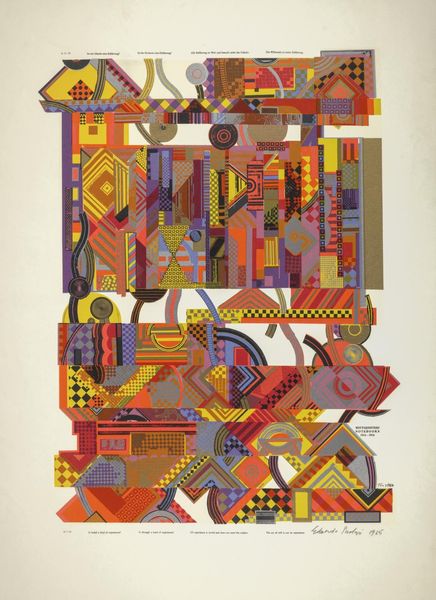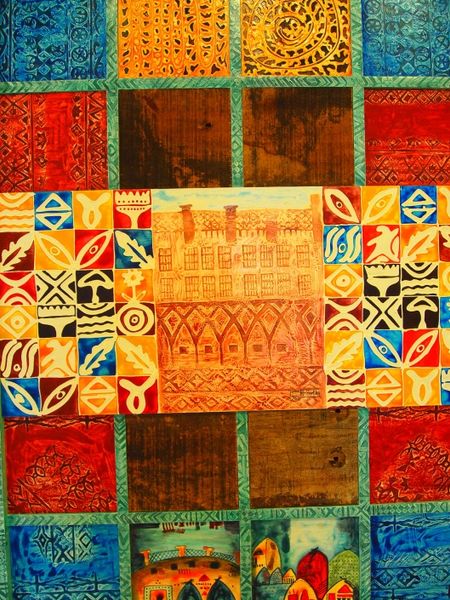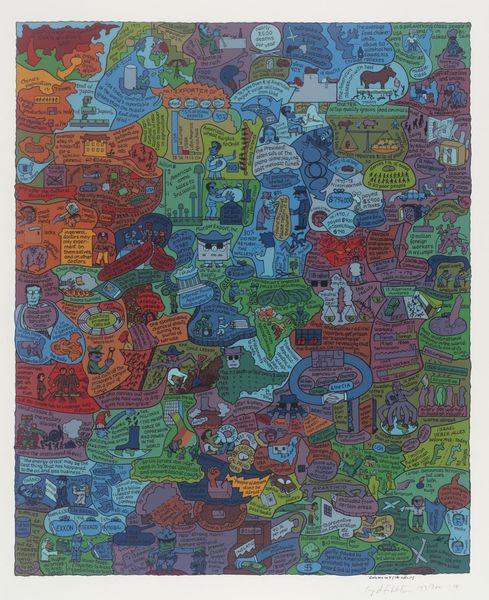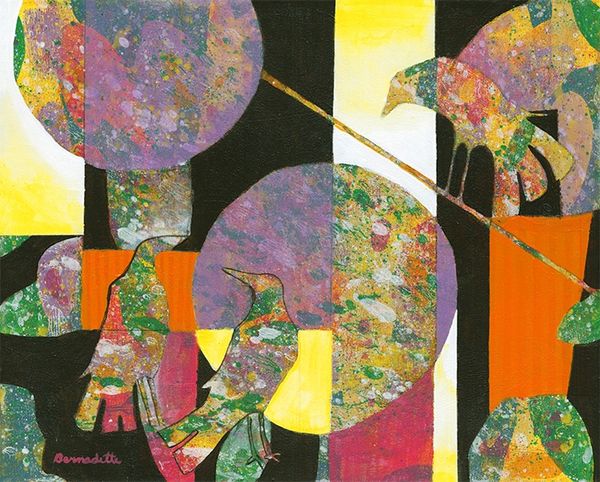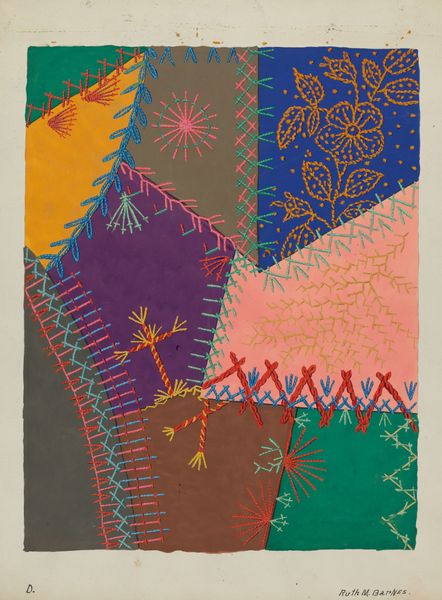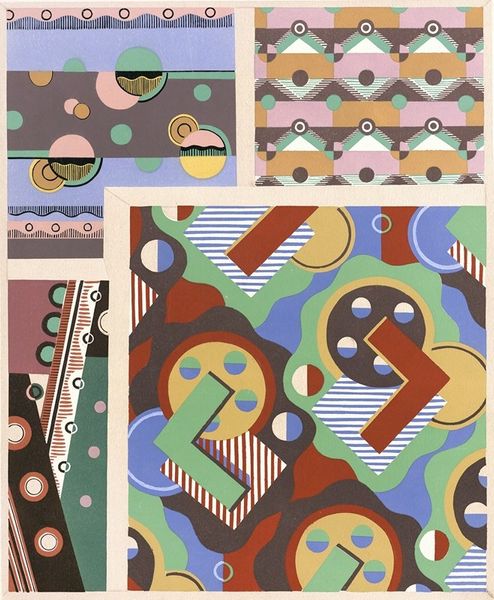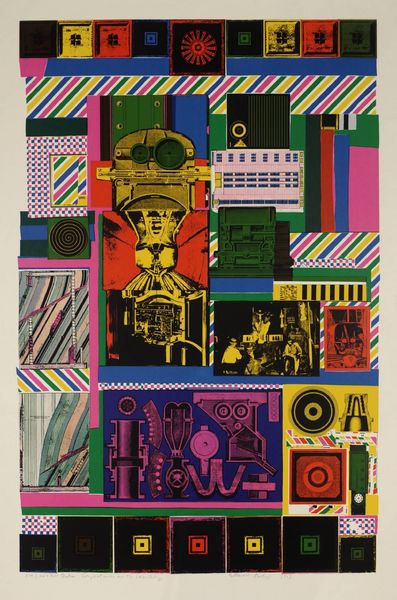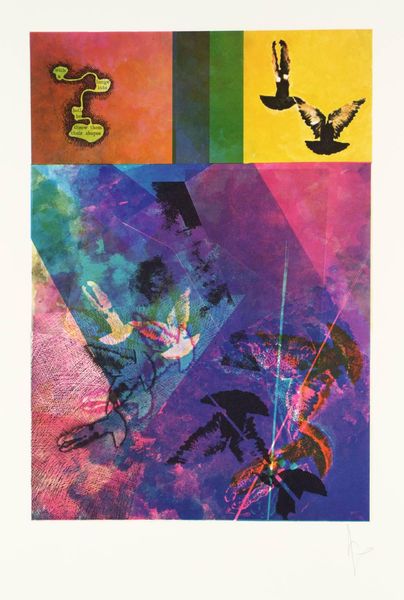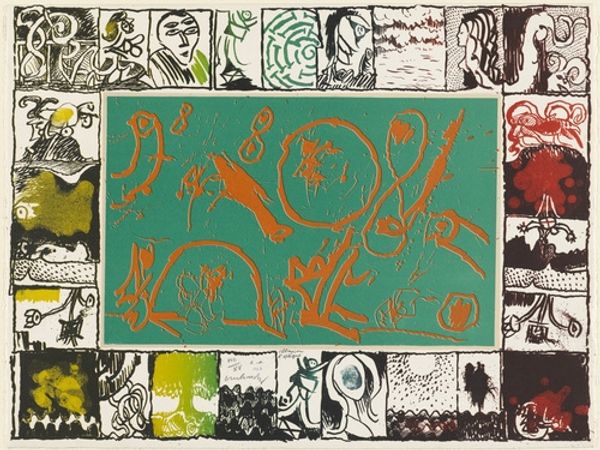
Dimensions: image: 687 x 547 mm
Copyright: © The Eduardo Paolozzi Foundation | CC-BY-NC-ND 4.0 DEED, Photo: Tate
Curator: Eduardo Paolozzi's screenprint, Futurism at Lenabo, presents us with a dynamic interplay of form and color. Editor: My first impression is controlled chaos, a vibrant yet unsettling collage of what looks like technological and natural motifs. Curator: Precisely. Paolozzi masterfully uses geometric shapes and bold colors, dissecting Futurism’s fascination with the machine age. Note the recurring triangles and the way they disrupt any sense of depth. Editor: But Futurism wasn't just about celebrating technology; it was also entwined with nationalism and, at times, destructive ideologies. Does Paolozzi's fragmentation serve as a critique of those aspects? Curator: It's plausible to view the fragmentation as a commentary, yes. Paolozzi often deconstructed utopian visions, revealing their inherent contradictions through colliding design elements. Editor: Ultimately, it’s this tension between the allure and the potential dangers of progress that makes Futurism at Lenabo so compelling. Curator: Indeed, it provides ample material for continued analysis and interpretation.
Comments
tate 7 months ago
⋮
http://www.tate.org.uk/art/artworks/paolozzi-futurism-at-lenabo-p04760
Join the conversation
Join millions of artists and users on Artera today and experience the ultimate creative platform.
tate 7 months ago
⋮
The life and theories of the Austrian philosopher Ludwig Wittgenstein inspired this sequence of screenprints. Each print includes quotations from Wittgenstein''s own writings or passages from a biography. The collages of fragmented images relate to these texts. Paolozzi has described the prints as ''a kind of combined autobiography''. His Italian background led him to identify with Wittgenstein as ''a foreigner in England'', who shared an interest in engineering and a love of cinema. He has also drawn parallels between Wittgenstein''s theories of language and his own artistic practice. Gallery label, August 2004
